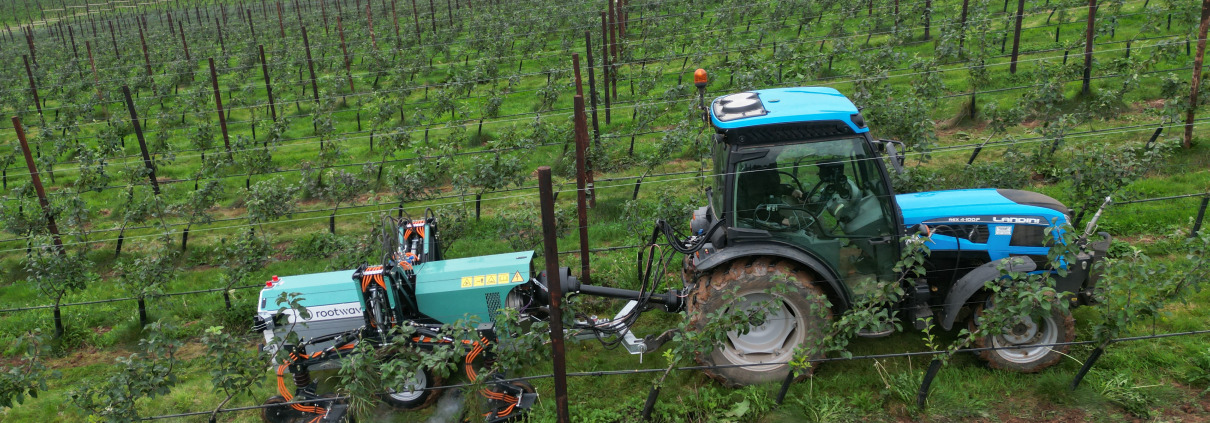Glyphosate delays divert time and resources away from where they are needed – innovation
The money and time spent by governments on committees and stewardship schemes would be better used on helping the industry transition to viable alternatives like electrical weed control. It is time for the industry to start looking forward, not backwards.
By Andrew Diprose, CEO – RootWave
It is difficult to find out exactly how much money, time and resources are spent on debating, regulating, monitoring and reviewing chemical use. Certainly, civil servants and politicians spend many hours at briefings, meetings and committees discussing the future of chemical products. Often, as was the case with glyphosate last month, without reaching a conclusion.
This is driven by the fact that chemical herbicides are by their nature, toxic – that’s how they work. Farmer’s use them because when the post-war population boom demanded a rapid increase in food production, chemicals provided a cheap means of meeting market needs.
Now, regulatory costs, legal costs and the technological costs associated with chasing ‘safer’ chemistry means the days of free-flowing cheap chemical herbicides are, rightfully, behind us.
Meanwhile, Government bodies spend millions of pounds on research programmes, some of which test the efficacy of one chemical as a potential replacement for another. A wasteful act of kicking the can down the road, as new chemical products carry the same long-term risks: safety, resistance, regulation.
To make matters worse for farmers many such studies are funded via levies, so in affect it is farmers paying to test chemical products that will later be sold to them at a premium.
Whatever the total cost of these activities, isn’t it time someone stopped and thought… are we wasting a whole heap of cash flogging, if not a dead horse, then an increasingly old and sick one?
Herbicides are hugely damaging. They hide behind a benign looking liquid in a bottle that is relatively easy to spray, but the manufacturing process to get there is an industrial, environmentally damaging and carbon intensive process. The toxicity of the residues is not immediately clear, and it can require significant effort to link health and environment issues to the use of herbicides.
Time to start rowing with the wind
It is clear which way the wind is blowing, the more we understand about chemicals, the less disposed we are to want to use them to produce our food.
Are we ready to ban them all together? Of course not. Can we do more to reduce our reliance on them and improve safety? Well, yes.
Why not take some of the time, money and resource that we spend on regulation and start spending it on innovation? Wouldn’t we be better using the public’s tax money, and farmer’s levy funds on quickening our arrival at the future, rather than prolonging the past?
What makes innovation and scaling alternatives difficult is that herbicides have historically been considered to be cheap. But there has been a hidden cost to our health and the environment that has not been amortised yet and will be left for later generations to pay.
As Einstein once said, “insanity is doing the same thing over and over and expecting different results”. The era of controlling weeds with chemistry is nearing its end. We can replace chemistry with physics in many cases. Electrical weed control is the most effective example of that.
The new RootWave eWeeder for fruit is effective, affordable and safe. It is on the market now; we know how well it works and we know that lots of farmers are very keen to use it within their orchards and vineyards.
It would be wrong to let the industry control the upcoming narrative that herbicides are the only competitive regenerative weed control technology, it is simply not true. eWeeding is lower cost, is an order of magnitude more energy efficient, and has no residues to risk our soils, biodiversity, and health.
Supporting the rollout of eWeeding into British and European horticulture would do far more to restrict the use of harmful chemicals in the sector, than bureaucratic processes and regulation will do – because it works, its affordable and farmers can reap additional benefits like wider treatment windows. Chemical herbicides such as glyphosate won’t be used, because they won’t be wanted.



